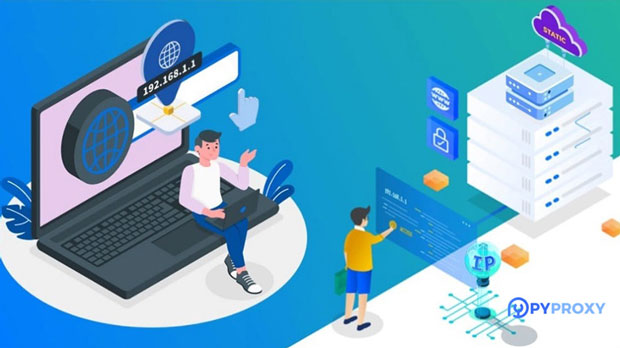When considering internet proxies, one of the key factors that users often analyze is the price difference between static and dynamic proxies. The primary distinction between the two lies in the way they handle IP addresses. static proxies offer a consistent, unchanging IP address, while dynamic proxies rotate through a pool of IP addresses, offering a different one with each session or request. This difference in functionality often reflects in the pricing of these services. However, is the price gap truly significant? In this article, we will explore the differences between static and dynamic proxies, their impact on pricing, and which type of proxy might be the most cost-effective depending on the user's needs. Understanding Static and Dynamic Internet ProxiesTo begin with, let's break down what static and dynamic proxies actually are. Static proxies, as the name suggests, provide users with a fixed IP address. This means that every time the user connects to the internet via the proxy, they use the same IP. These proxies are often preferred by users who need a constant IP for activities like web scraping, account management, or accessing region-specific content.Dynamic proxies, on the other hand, rotate IP addresses at regular intervals. This makes them useful for tasks that require anonymity or for those who want to avoid being blocked by websites. Dynamic proxies often have larger pools of IPs, and with each request, a new IP is assigned. This rotation can help in bypassing geo-restrictions, preventing IP bans, and making the user’s internet activity harder to trace.Price Comparison: Static vs. Dynamic ProxiesWhen it comes to pricing, there is a noticeable difference between static and dynamic proxies. Static proxies tend to be more expensive than dynamic proxies for several reasons. First, static proxies offer a dedicated IP that is exclusively used by the client, which means the provider can only offer the IP to one user at a time. This exclusivity adds to the cost of the service. Furthermore, static proxies are often used for more specific and professional purposes, such as managing business accounts or scraping, which also drives up their value and price.In contrast, dynamic proxies are typically more affordable because they make use of a shared pool of IP addresses. Since these proxies rotate through different IPs and can be used by multiple clients at once, the cost is spread across a larger group of users. This collective usage helps to lower the overall price of dynamic proxy services.Another factor contributing to the price difference is the level of control and customization that static proxies offer. Static proxies are often seen as more reliable for long-term use, offering better consistency in performance. For businesses or individuals who need stable connections and IP addresses for extended periods, the extra cost is justified. Dynamic proxies, while offering flexibility and rotation, may experience slight disruptions or delays due to the sharing of IPs among multiple users.Factors Affecting the Price of Static and Dynamic ProxiesSeveral factors influence the cost of both static and dynamic proxies. The geographical location of the proxies plays a significant role in pricing. Proxies located in countries with high demand, such as the United States, the United Kingdom, or Canada, tend to be more expensive than those located in regions with lower demand. Static proxies, due to their fixed nature, often require more maintenance and monitoring to ensure that they are not being overused or abused, which contributes to their higher price.In addition to location, the bandwidth and speed offered by the proxy service also affect the price. High-speed proxies with large bandwidth capabilities are generally more expensive, as they allow for faster data transfer and more reliable connections. Static proxies often come with better bandwidth and consistent performance, which can drive up the price.The number of IPs available within a dynamic proxy service can also impact pricing. Larger IP pools generally come at a higher cost, but they offer better anonymity and a higher level of security. The more extensive the pool of dynamic proxies, the higher the price will typically be. However, the advantage of dynamic proxies is that users don’t need to commit to a single IP, and they have a greater level of flexibility and anonymity at a lower cost.Cost Efficiency: Which Type of Proxy is More Affordable?While static proxies tend to be more expensive, this doesn’t necessarily mean they are not worth the investment. For users or businesses that require a consistent IP for activities such as managing social media accounts, tracking search engine rankings, or engaging in e-commerce, static proxies may prove to be more cost-effective in the long run. The stability and reliability they offer are essential for such tasks, and the cost is justified by the added value.On the other hand, dynamic proxies offer a cost-effective solution for those who prioritize anonymity, bypassing geographical restrictions, or scraping large amounts of data. If your activities do not require a fixed IP address, and if your main concern is avoiding detection or blocking, dynamic proxies offer a good balance between affordability and functionality. Additionally, dynamic proxies are better suited for short-term or non-critical tasks, as they offer a higher level of flexibility at a lower cost.When Should You Choose Static Proxies Over Dynamic Proxies?Choosing between static and dynamic proxies depends largely on your specific needs. Static proxies are ideal for situations where consistency and reliability are paramount. For instance, if you are running an SEO campaign or need to maintain an online presence for an extended period, the stability of a static IP will be crucial.If you are engaged in activities such as web scraping, data collection, or social media automation where anonymity is a top priority, dynamic proxies would be the better option. Dynamic proxies are perfect for large-scale tasks that involve multiple requests, where the rotation of IP addresses can help reduce the risk of being blocked or detected.In conclusion, the price difference between static and dynamic proxies is substantial, with static proxies typically costing more due to their fixed nature, exclusivity, and higher reliability. However, dynamic proxies offer a more affordable alternative, especially for users who need flexibility, anonymity, and the ability to bypass geo-restrictions. Ultimately, the decision between static and dynamic proxies should be based on your specific needs, the nature of your tasks, and the level of control and consistency you require. Understanding the pros and cons of each type will help you make an informed choice and ensure that you get the best value for your money.
Sep 08, 2025



































































